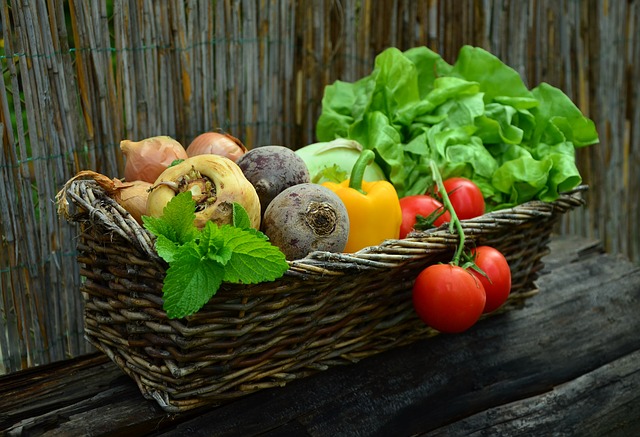Inflammation: It’s your body’s normal response to injury, infection and even hard training. Your diet plays a major role in how quickly you recover from inflammation and decreases your need for anti-inflammatory medications that can have harmful long term side effects when used too frequently.
Before you chalk the fact that you don’t bounce back quickly from hard efforts or long runs to getting older, you really need to take a closer look at what kinds of foods you’re eating. A diet rich in anti-inflammatory foods will help your body fight inflammation faster as well as give it the fuel it needs to get through your crazy busy day and your next run.
But exactly what are anti-inflammatory foods? In working with runners, I’m often met with a blank stare when I make this recommendation. In a nutshell they’re fruits, vegetables, leafy greens (Ya I know, leafy greens are vegetables, but in my opinion they could be a super food group of their own because they have so much goodness that every runner needs!), nuts, whole grains, fish, and healthy oils.
Because I know you are busy and don’t have time to scroll through explanations of why each food is good for you only to forget what was at the beginning of the list by the time you’ve read the whole article, the following alphabetical list is a quick resource to help you know exactly which foods to include when meal planning and building your grocery list.
- Almonds
- Apples
- Avocados
- Beans
- Bell Peppers
- Blueberries
- Broccoli
- Brown Rice (Click Here for more gluten free whole grains)
- Cabbage
- Cauliflower
- Carrots
- Cherries
- Chili Peppers
- Dark Chocolate (at least 70% cacao)
- Garlic
- Grapes
- Green Tea
- Kale
- Mushrooms
- Olive Oil
- Olives (both black and green)
- Onions
- Pecans
- Salmon
- Sauerkraut
- Spinach
- Squash
- Strawberries
- Sweet Potatoes
- Swiss Chard
- Tomatoes
- Trout
- Turnip Greens
- Walnuts
By no means is this an all inclusive list. This list is meant to help you start adding more anti-inflammatory foods to your meals and snacks on a consistent basis.
A few things to note here:
- Your cooking methods can affect the anti-inflammatory properties of your food. We’ll talk more about that in a later post.
- If you have not been eating a lot of vegetables consider cooking them instead of eating them raw for a couple of reasons. 1) Raw vegetable have the highest fiber content and you could send your digestive tract into distress if its not use to that much fiber. (Ever get a tummy ache after eating a huge salad?) 2) Cooking them gives you the opportunity to spice things up and add healthy fats both of which will increase your satiety and likelihood you will want to eat more vegetables because they’re not bland and boring!
- Slow down and chew your food! Your body actually begins to break down all the goodness of your food while it’s still in your mouth. Do yourself a favor and help it out by savoring the taste of your food and chewing it thoroughly. Click here to learn more!
There you have it, a simple list to reference and give you ideas for meal planning. Start this week adding some of these anti-inflammatory foods to your diet and boost your recovery process!






Hi Beverly! I too have dealt with issues that caused me to develop an auto-immune disease back in 2001. After moving to Arkansas 9 years ago I often found myself feeling really alone because I didn’t know anyone, but then made some local friends. Even after moving over to Little Rock, all of my friends were health coaches. I thank social media for helping me to have people to talk to (friends and family back in Michigan and here in Arkansas) That connection is invaluable. It wasn’t until about a year ago that I realized that if I am under stress I don’t even know it. I don’t really feel it physically. This dumbfounded me because my stress hormone was high, but I didn’t feel bad. Anxiety also acts similarly like fear towards me, but I do feel the butterflies of anxiety now. Working out on a regular basis has helped me to squash stress and anxiety. Plus now, cbd oil has been the biggest and most fantastic way I have been able to cope after being homebound and stuck on the couch since April with a severely sprained ankle. Even getting on a plane (which I hate to do) I had no anxiety at all. I feel super relaxed these days, and finally I am able to begin working out….not running at this time, but I can move and walk a few miles a day now. It has been so helpful to connect with other coaches like yourself and speak more about this. In not speaking about it more diseases can pop up unexpectedly and we never want this to happen. It is time to Heal. Love ya Beverly!!
Great points Heidi! Like you, I didn’t even know I was suffering from anxiety until I sought help sorting through all the craziness in my life. Hmm…CBD oil…who knew! I agree, we need to speak out more. I think too many people put up a front and suffer in silence!
Thank you for sharing your story. You are so brave. If you ever want to compare notes on fear, anxiety, grief, not being able to get out of bed, coping with and without running as your crutch, reinventing yourself, truly finding your faith in Christ; my heart always has time and a place for you and your twin!!! ❤️ Conlin.cathy@gmail.com
Oh I bet you could Cathy! Thank you so much for sharing. I don’t think we talk about mental health enough. I am so proud of you for finding your faith and strength in the Lord. He is ever present, evening our worst storms!
Hi Beverly,
I so miss connecting with you all! I too have very much shared your journey. I’m on the other side of it now but am changing many things in my life wich as you know comes with its own grieving as we leave the old behind. It’s lovely to see you share your story as I know it helps many of us.
Would love to get together again.
Hugs,
Kelley
Kelley I miss you too! Thank you for your kind words and your support. We need to get the Soul Sisters together again!